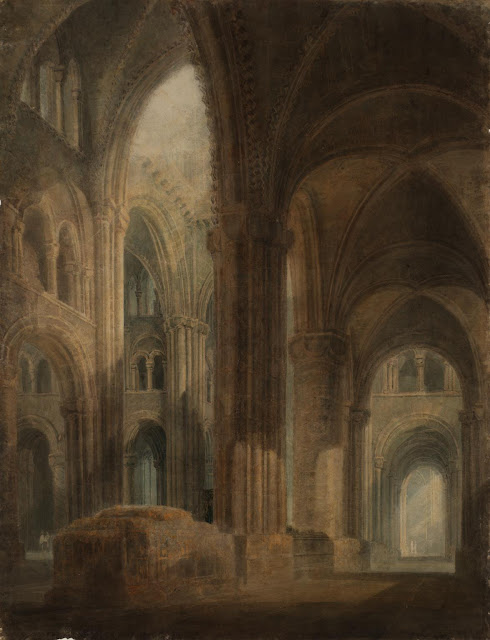J.M.W. Turner: watercolors from Tate's collection...
12:02 a.m.
16/01/18 - Joseph Mallord William Turner (London, 1775-1851) produced hundreds of watercolors during his creative career, some of them so innovative that they anticipated Abstraction and Impressionism. The Bellas Artes Museum in Buenos Aires is currently exhibiting 85 of those artworks that span almost over 50 years in the life of the artist. The paintings belong to the permanent collection of London’s Tate Modern and the exhibition is organized chronologically with early studies, landscapes in England and France and small abstract watercolors.
Technique: graphite and watercolor on paper / Measures: 20,4 x 27 cm
The first sign reads that, by the end of the 18th century, Turner toured the nearby areas of London to draw in his sketch book. Of those years, the museum displays some early architecture studies and landscapes with shadows in different colors and variations in perspective.
Richmond, Yorkshire: Color study, by J.M.W. Turner (1797- 1798)
Technique: graphite and watercolor on paper / Measures: 42.2 x 54.7 cm
Technique: graphite, watercolor and gouache on paper / Measures: 75.8 x 57.9 cm
As the new century begins, we see a shift in his production, evolving towards the shapes he is so well-known for. He not only depicts landscapes but also climate changes, like humidity and lighting effects. Most of these artworks are studies or detailed sketches of Nature, since he never painted outdoors but from the details of his visual memory of a precise instant.
Technique: watercolor on paper / Measures: 17.3 x 24.5 cm
Study for ‘The Loss of an East Indiaman’, by J.M.W. Turner (1818)
Technique: graphite, watercolor and chalk on paper / Measures: 31.1 x 46 cm
By the 1830s, Turner became a frequent visitor to France and its salons, but he never participated in any of them. In "Honfleur, Normandy from the West" two different areas seem to converse. The one to the right shows two domes, while the left one becomes abstract between the sky, the mountains and the atmospheric effects of the sea. The waves breaking towards the cliff give it an overall romantic climate, which Turner promoted.
Honfleur, Normandy from the West, by J.M.W. Turner (ca. 1832)
Technique: watercolor and gouache on paper / Measures: 14 x 19.2 cm
Land's End, Cornualles, by J.M.W. Turner (ca. 1834)
Technique: watercolor on paper / Measures: 35.6 x 31 cm
A Wreck, Possibly Related to ‘Longships Lighthouse, Land’s End’, by J.M.W. Turner (ca. 1834)
Technique: graphite and watercolor on paper / Measures: 33.8 x 49.1 cm  Bamburgh Castle, Northumberland, by J.M.W. Turner (ca. 1834)
Bamburgh Castle, Northumberland, by J.M.W. Turner (ca. 1834)
 Bamburgh Castle, Northumberland, by J.M.W. Turner (ca. 1834)
Bamburgh Castle, Northumberland, by J.M.W. Turner (ca. 1834)
Technique: watercolor on paper / Measures: 45.9 x 75.9 cm
In "A Wreck, Possibly Related to ‘Longships Lighthouse, Land’s End’”, our eye stops on the smoke and then moves towards the most defined object: the ship. The title helps us understand the image produced by the watercolor. This is the best example of Turner’s abstraction.
Turner was a true innovator, a mercenary of the landscape, which was forced to change due to the Industrial Age. The exhibition allows us to appreciate just how skilled he was in the use of watercolors. As the paintings are mostly very small, we are drawn to see them up-close (in spite of the constant complaints of the security staff), resulting in an intimate encounter between us and the painting.
















0 comentarios